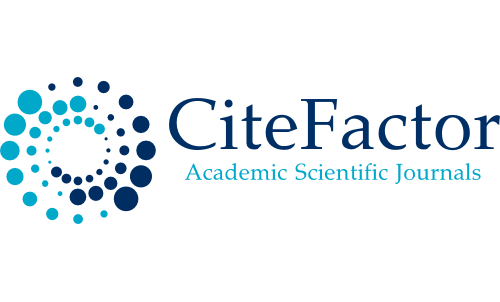Novas Perspectivas Acerca do Contexto Inflamatório Th2 Na Asma
DOI:
https://doi.org/10.17765/1983-1870.2015v8n1p193-203Palavras-chave:
Asma, Eosinófilos, IL-33, Mastócitos, Músculo Liso, Asthma, Eosinophils, Mastocytes, Smooth MuscleResumo
A asma é responsável por acometer cerca de 300 milhões de pessoas por ano, resultando na sobrecarga dos sistemas de saúde e cofres públicos. Novas perspectivas em relação à função das células inflamatórias e citocinas envolvidas na resposta imune alérgica têm sido propostas. Nesta revisão buscou-se publicações científicas estrangeiras, escritas em língua inglesa, através da ferramenta de pesquisa da MEDLINE/PubMed, realizada nos meses de maio a julho de 2014. Descobertas recentes em relação ao papel dos mastócitos, células musculares lisas das vias aéreas, eosinófilos e citocinas do perfil Th2 foram apontadas. Mastócitos estão mais ativos nas vias aéreas de pacientes com asma grave, podem ser ativados por uma via alternativa à clássica ligação cruzada com IgE e ainda podem induzir a polarização de células T. As células musculares lisas das vias aéreas atuam como fonte de citocinas e quimiocinas auxiliando na sinalização/recrutamento do processo inflamatório. Eosinófilos são células protagonistas na asma e podem ser recrutados por diferentes classes de eotaxina. A IL-33 vem sendo relacionada com as fases iniciais da inflamação, auxiliando na construção da resposta imune, por estimular a liberação de IL-5 e IL13, atuando no recrutamento e sinalização celular. Considera-se, portanto, que novos estudos precisam ser realizados com o objetivo de encontrar novos conhecimentos em relação a estas perspectivas, visando identificar novas alternativas para o tratamento da asma. New Perspectives on the Inflammatory Context Th2 in Asthma ABSTRACT. Asthma attacks approximately 300 million people every year with an overload on health systems and government budget. New perspectives on the function of inflammatory cells and cytokines involved in the allergic immune response have been proposed. Current review deals with foreign scientific publications, written in English, retrieved by research engine MEDLINE/PubMed, from May to July 2014. Recent discoveries on mastocytes, smooth muscular cells of the aerial pathways, eosinophils and Th2 cytokines have been underscored. Mastocytes are more active in the aerial pathways of patients with serious asthma problems and may be activated by an alternative pathway to the classical crossed link with IgE. They may even induce the polarization of T cells. The smooth muscle cells of the aerial pathways are a source of cytokines and chemiokines which help in the signaling/recruitment of the inflammatory process. Eosinophils are protagonist cells in asthma and may be recruited by different classes of eotaxin. IL-33 is related to the early stages of inflammation, helping the construction of the immune response by stimulating the release of IL-5 and IL-13 which act in cell recruitment and signaling. Further studies are required to deepen information on these perspectives to identify new alternatives for the treatment of asthma.Downloads
Não há dados estatísticos.
Downloads
Publicado
22-06-2015
Como Citar
Souza, M. P. A., & Silva, R. A. A. da. (2015). Novas Perspectivas Acerca do Contexto Inflamatório Th2 Na Asma. Saúde E Pesquisa, 8(1), 193–203. https://doi.org/10.17765/1983-1870.2015v8n1p193-203
Edição
Seção
Artigos de Revisão
Licença
A submissão de originais para a revista Saúde e Pesquisa implica na transferência da Carta Concessão de Direitos Autorais, pelos autores, dos direitos de publicação digital para a revista após serem informados do aceite de publicação.A Secretaria Editorial irá fornecer da um modelo de Carta de Concessão de Direitos Autorais, indicando o cumprimento integral de princípios éticos e legislação específica. Os direitos autorais dos artigos publicados nesta revista são de direito do autor, com direitos da revista sobre a primeira publicação. Os autores somente poderão utilizar os mesmos resultados em outras publicações, indicando claramente a revista Saúde e Pesquisa como o meio da publicação original. Em virtude de tratar-se de um periódico de acesso aberto, é permitido o uso gratuito dos artigos, principalmente em aplicações educacionais e científicas, desde que citada a fonte. A Saúde e Pesquisa adota a licença Creative Commons Attribution 4.0 International.
A revista se reserva o direito de efetuar, nos originais, alterações de ordem normativa, ortográfica e gramatical, com vistas a manter o padrão culto da língua e a credibilidade do veículo. Respeitará, no entanto, o estilo de escrever dos autores. Alterações, correções ou sugestões de ordem conceitual serão encaminhadas aos autores, quando necessário. Nesses casos, os artigos, depois de adequados, deverão ser submetidos a nova apreciação. As opiniões emitidas pelos autores dos artigos são de sua exclusiva responsabilidade.


















